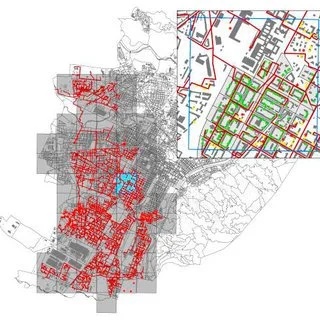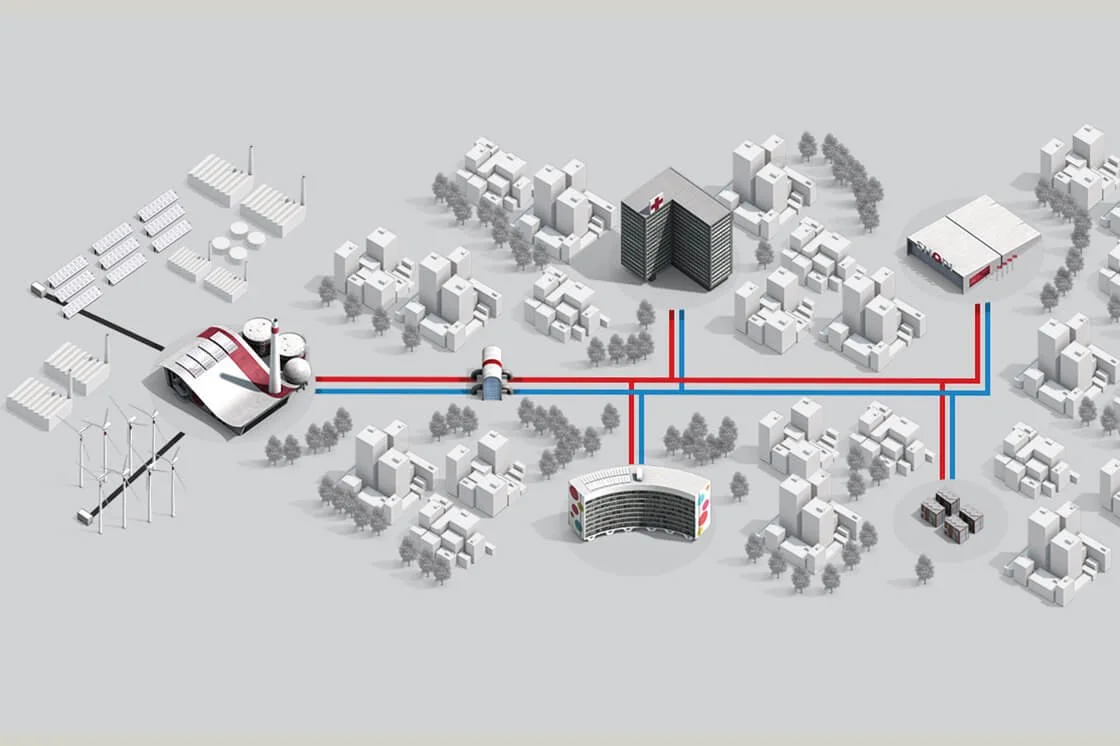
By Design Tech Solutions — Experts in Low-Carbon District Heating Systems
Introduction: Designing for a Renewable Heat Future
As the UK accelerates toward net zero, the pressure to decarbonise heat is rising fast. District heating networks are uniquely positioned to support that shift — but only when designed to integrate renewable and low-carbon energy sources effectively.
At Design Tech Solutions, we help clients plan and deliver networks powered by sustainable technologies, from air-source heat pumps and biomass to waste heat recovery and future-ready geothermal. Our goal is to make low-carbon options practical, scalable, and financially viable.
What Are Renewable Heat Sources in District Heating?
Renewable or low-carbon heat sources provide thermal energy without relying on fossil fuels. These sources can be centralised (e.g. energy centres) or decentralised (e.g. building-level heat pumps) and are increasingly incentivised through UK policy and planning frameworks.
Examples include:
Air Source & Ground Source Heat Pumps
Extract ambient heat from air or ground, ideal for low-temperature networks.Biomass Boilers
Use organic material like wood pellets to generate heat with renewable credentials.Water Source Heat Pumps
Harvest heat from rivers, canals or other bodies of water — particularly in urban zones.Waste Heat Recovery
Capture heat from industrial processes, data centres, or energy-from-waste plants.Geothermal Energy
Tap into deep-earth heat for large-scale, long-term base load heating.Solar Thermal
Use rooftop or ground-based collectors to supplement daytime heating loads.
How DTS Supports Renewable Integration in Heat Networks
We go beyond simply identifying energy sources — we design around them.
Energy Source Appraisals
We assess availability, load profile alignment, and feasibility based on demand, geography, and infrastructure.Hydraulic & Temperature Compatibility
We ensure renewable sources integrate properly into the heat network’s hydraulic profile, flow temperature, and return loops.Storage & Load Balancing Design
We incorporate thermal storage or backup systems to handle intermittency and peak demand.Carbon Performance Modelling
We model operational carbon emissions and lifecycle performance to ensure true environmental benefit.Futureproofing for Hydrogen or Electrification
We design for long-term adaptability as the energy landscape evolves — including hydrogen-ready pipework or decentralised electric heat inputs.
Key Considerations for Integrating Renewables
Temperature & Pressure Levels: Some renewables (like heat pumps) operate at lower temperatures than traditional gas boilers — affecting network sizing and insulation.
Energy Centre Design: May require zoning, planning permission, or acoustic mitigation.
Grid & Infrastructure Interfaces: Especially important when combining electric systems with variable tariffs or DSR (demand-side response) strategies.
Local Planning & Policy Alignment: Must meet GLA, Net Zero, and local development plan requirements.
We ensure these factors are embedded in the design — not treated as afterthoughts.
FAQ
Let’s Build Greener, Together
We help clients make renewable heat a reality — not just a policy ambition. If you're planning a low-carbon district heating network, we’ll help you design it right from the start.
RELATED READS
Explore our detailed guides on designing effective, future-ready district heating systems. Each article is written to help clients, developers, and stakeholders understand what great network design looks like in practice.








